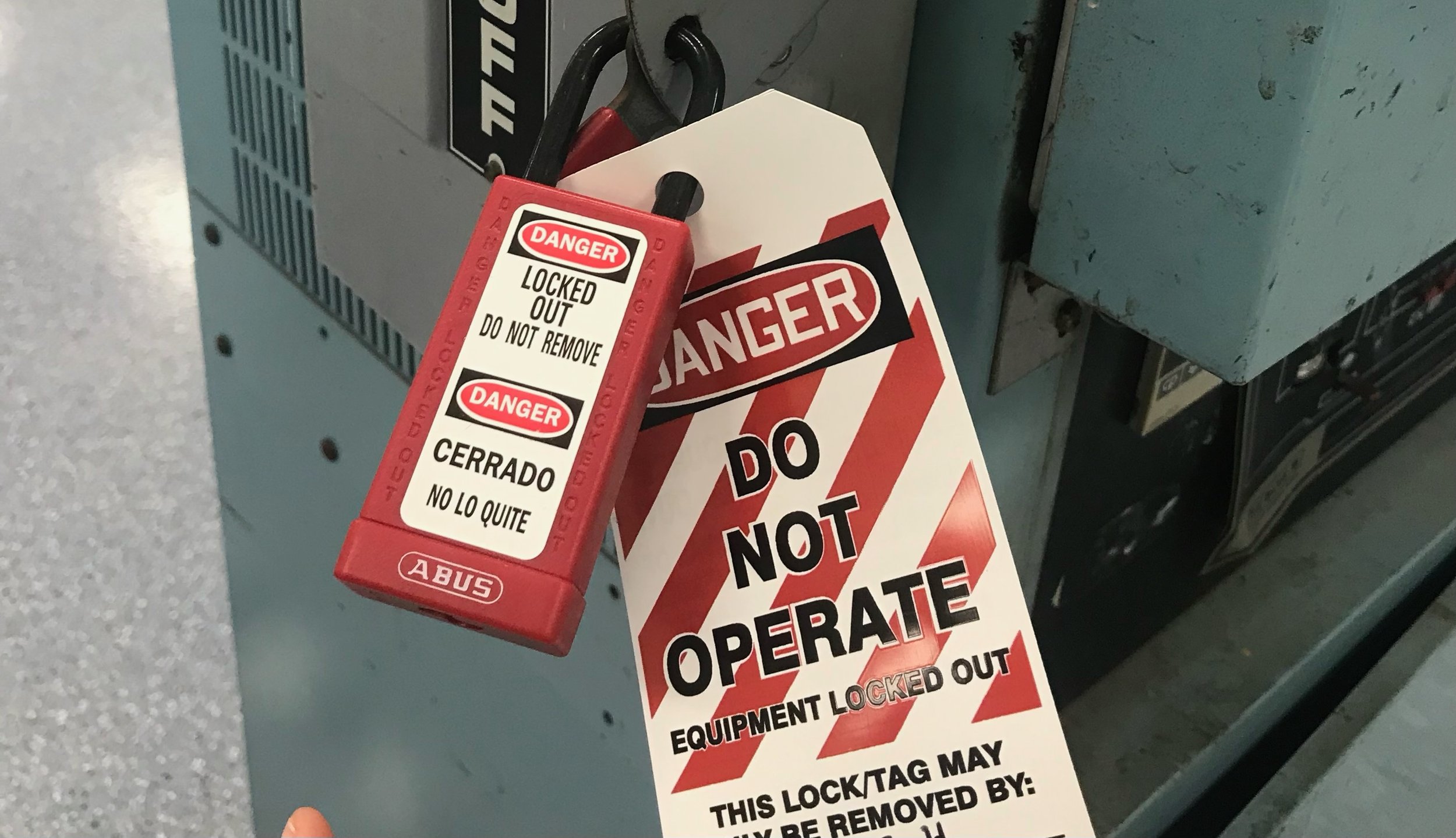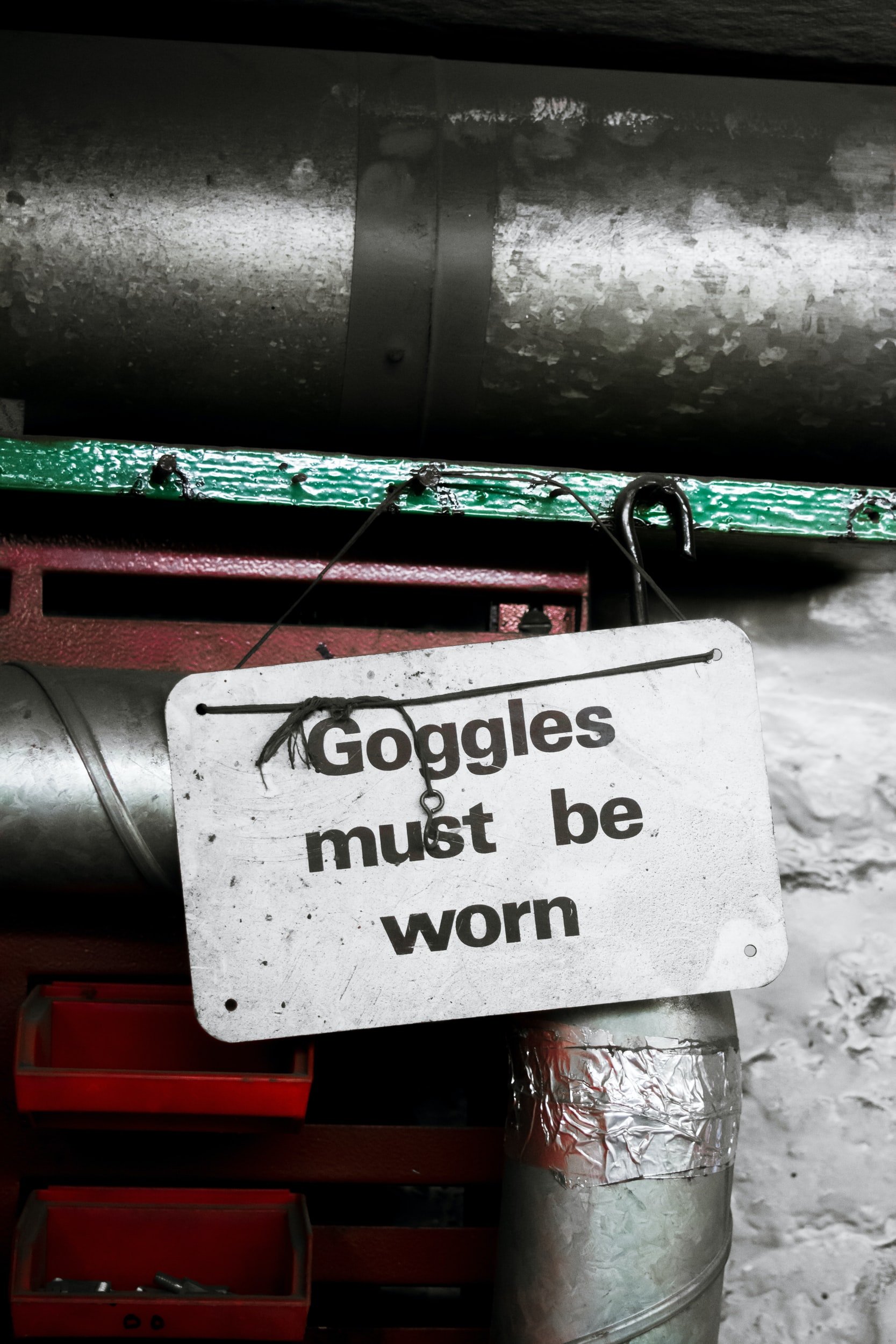Protecting Aging Employees in the Workplace
According to the Bureau of Labor Statistics (BLS), in 2020, 24% of workers were 55 or older. In addition, fatal injuries among workers who are 55 and older increased by 8% from 2018 to 2019. The 2,005 deaths that occurred in 2019 signify the most significant number ever recorded for this age group. So if we know that nearly a quarter of our workforce is over 55 years old and they’re more likely to get hurt, what controls can we implement to keep them safe?
Fall Hazard Prevention in the Home; Toolbox Talk
Fall hazards are foreseeable at work and in the home. You can identify them and then eliminate exposure or control them before they result in injuries or sometimes even death. This blog discusses the types of controls and practical examples that everyone can implement right now to eliminate or prevent falls in the home. Use this blog to start your Total Work Health mentality at your workplace.
LOTO Training and Periodic Inspections
OSHA’s Control of Hazardous Energy Standard, also known as the Lockout Tagout (LOTO) Regulation, has specific requirements for Periodic Inspections and Employee Training for Authorized, Affected, and Other Employees. Read this blog to understand two of the crucial elements of an effective lockout tagout program that will prevent employee injuries and illnesses.
LOTO Procedure Requirements and Best Practices
OSHA’s LOTO standard has three main elements to create an energy control program. This blog will discuss the Control of Hazardous Energy Standard’s Purpose, as well as the three main elements, focusing on Energy Control Procedures.
LOTO Standard FAQs on Scope and Application
Workers performing maintenance on machinery may be exposed to injuries from the unforeseen energization, startup of the machinery, or release of stored energy. OSHA’s Lockout/Tagout standard found at 1910.147, also known as LOTO or the Control of Hazardous Energy, requires the acceptance and implementation of procedures to shut down machinery, isolate it from its energy source, and prevent the release of potentially hazardous energy while maintenance and servicing activities are being completed. This blog helps employers gain clarity with commonly asked questions on the LOTO standard's scope and application to help employers understand who the LOTO standard does and does not apply to and what activities are and are not covered.
Safer Ways to Remove Snow from Roofs
Every year, workers are killed or seriously injured while performing snow or ice removal from rooftops and structures such as decks. Based on the findings of OSHA investigations, falls cause the most worker fatalities and injuries during rooftop snow removal. Workers may fall off roof edges, through skylights, and from ladders and aerial lifts to the ground below, which is likely to be fatal. Workers may also be injured or killed by a roof collapse. There are safer ways to remove ice and snow off rooftops than to climb onto the roof, which is a high-risk task.
Protect Your Hearing at Concerts & Reduce Your Noise Exposure
I found earplugs that are designed for concerts that do not muffle the music and reduce your exposure to dangerous noise levels. The NRR was reduced while wearing the hearing protection earplugs. I love these earplugs and wanted to share! Use my code SAFETYBRAN to save 10% off your order at eargasm.com
The Value of a Safety and Health Program
Every year, more than 5,000 workers are killed on the job (an average of 14 deaths per day), and more than 3.6 million suffer a serious job-related injury or illness. Even one serious workplace injury or illness can have a devastating impact on an organization, especially a small business. Does your business have a safety program? This blog will discuss the impacts of a serious injury, why you need a safety program, how to implement a safety program, and recommended practices.
Can a New Process Save Trash Collector Lives?
Ergonomic injuries and deaths in the Trash Collection Industry; can we save workers lives by implementing a new way to collect trash? From high risk to low risk to using machines to drive risk reduction. Reducing manual labor and reducing the potential of being struck by a car or an object is a reality in the trash collection industry. Here is how.
Foghorn Noise Levels
Ever wonder how loud foghorns can be? Well now you don’t have to! I checked out a Maine lighthouse and captured the max level in dBa. Read the blog to see how loud the foghorn was!
OSHA COVID-19 Emergency Temporary Standard
As part of the Occupational Safety and Health Administration’s (OSHA) commitment to protect workers and deliver stronger worker safety requirements, the agency has issued a COVID-19 Healthcare Emergency Temporary Standard (ETS) that establishes new requirements to protect workers from exposure to the coronavirus in all settings, with some exceptions, where any employee provides healthcare services or healthcare support services. This blog will go over some of the requirements for the new healthcare Emergency Temporary Standard and will take 10 minutes to read.
Apple AirPods; Are you Aware of the Associated Hazards?
How often do you read the safety and handling instructions of products you buy? Probably not very often. So today, I thought I would educate others on the associated hazards of Apple AirPods.
The Benefits of Managing your Safety Program with Digital Tools
The Benefits of Managing your Safety Program with Digital Tools
The Queen’s Gambit
And that got me thinking about the safety profession. Safety professionals are willing to collaborate with each other on solutions because…
Hazardous Mechanical Machine Motions and Amputations
Learn about hazardous mechanical motions of machinery that can cause amputations if not controlled properly.
Safety Recommendations for Workers Handling Human Remains
Even Morticians need to perform their job safely. Use these recommendations from OSHA to prevent injuries and illnesses.
OSHA Inspections - Records
Be prepared with the records you need to ace an OSHA Inspection.
Bloodborne Pathogen Standard
The Bloodborne Pathogen Standard requires employers to ensure they have an Exposure Control Plan and are training employees that have “occupational exposure” to Bloodborne Pathogens.
Responsibilities under OSHA
Employers should be aware of their responsibilities under OSHA.




















